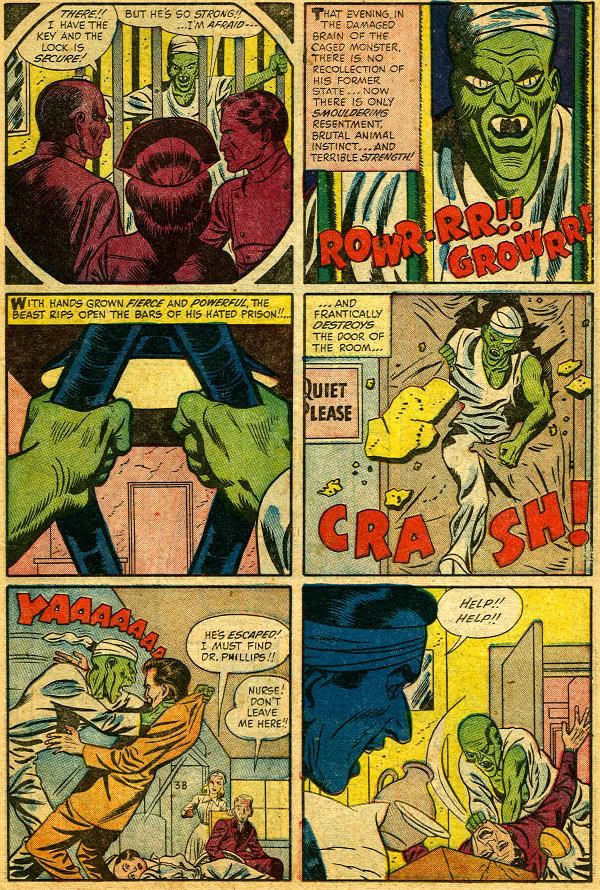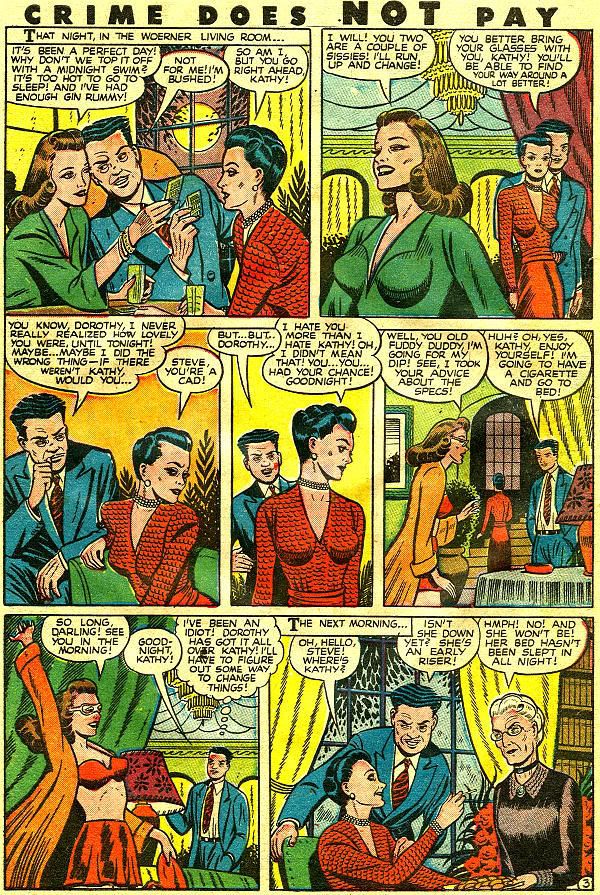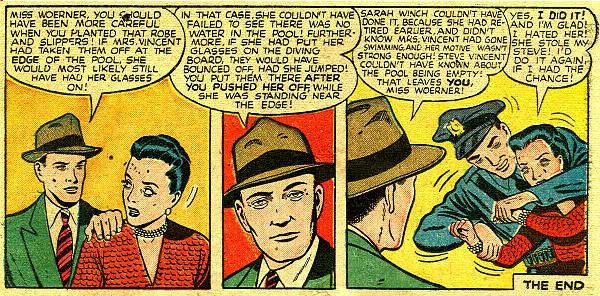 Number 252
Number 252
Alan J. Hanley was a real Goodguy
The late Alan J. Hanley was a talented cartoonist/writer who self-published in the 1960s and '70s. He loved Captain Marvel and funny animal comics of the 1940s, and his comic strips are nostalgic pastiches of that era.
"Goodguy" is from his magazine, Comic Book #6, from 1974. It's the second part of a story, but mostly self-contained, so you can figure it out. Hanley could be didactic, but was still entertaining when sharing his political and moral views. In this strip Goodguy and Green Lama of the Limbo League discuss sex and violence in the comics while Goodguy is strapped to a guided missile headed for Disneyland!

Hanley died tragically young. His friend and contemporary, cartoonist Jim Engel, wrote of Hanley in an e-mail to me:
Alan Jim Hanley (he was going by "Alan" when I first met him in person in--I THINK-- 1970. Later he went more by "Jim") was both a friend and cartooning idol of mine. I thought then (and still do today) that his work was just the greatest---both (as you said) modern and nostalgic all at once. Goodguy, The Mitey Buggers, The Spook, Captain Thunder, All-American Jack (I love Goodguy, but my single favorite Hanley story is, I think, "BACK ON THE TRACK WITH ALL-AMERICAN JACK") were all just perfect by my standards. I wrote a memorial thing about him in THE COMIC READER when he died, and I'm pretty sure I said something like "there's nothing I would have liked better than to do the kind of wonderful stories he did", and 27 years later that's STILL true. I had somebody scan a picture I took of him at the San Diego Comicon in 1977. The hotel screwed up our rooms, and Jim, Chuck Fiala & I were given a big suite to share. That was Jim's first time there. On the easel that's Goodguy shouting "Good Garbage!", and Pogo & Albert as Batman & Robin.
 He died in the winter of 1980. He'd driven into the small town he lived in to get his morning coffee & mail. On his way home, his car went off the road & hit a tree. They think he'd blacked out, and the day before he'd complained of a headache/pain . He had a wife and two small daughters. He was 42. Jim's funeral was in a small town called Tomah, Wisconsin, which had cool old metal signs on the lamp posts that pictured Walt & Skeezix, and proclaimed Tomah as the birthplace of Frank King. Chuck & I thought that was kind of appropriate... I often wonder what he could've/would've done in later years if he'd lived. I'd have loved to done some collaborating with him for real as I got better as a cartoonist in those years.
He died in the winter of 1980. He'd driven into the small town he lived in to get his morning coffee & mail. On his way home, his car went off the road & hit a tree. They think he'd blacked out, and the day before he'd complained of a headache/pain . He had a wife and two small daughters. He was 42. Jim's funeral was in a small town called Tomah, Wisconsin, which had cool old metal signs on the lamp posts that pictured Walt & Skeezix, and proclaimed Tomah as the birthplace of Frank King. Chuck & I thought that was kind of appropriate... I often wonder what he could've/would've done in later years if he'd lived. I'd have loved to done some collaborating with him for real as I got better as a cartoonist in those years.
Page 1 / Page 2 / Page 3 / Page 4 / Page 5 / Page 6 / Page 7 / Page 8 / Page 9 / Page 10























































